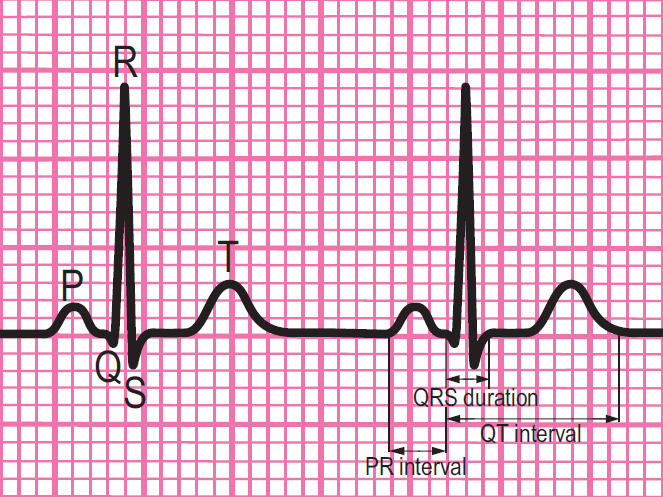
- Interpreting the ECG
A rhythm strip has already been recorded. You decide to interpret this as a guide to diagnosis and treatment:
Examine each image and select your responses. When you are ready, select confirm to receive your feedback.
Examine each image and select your responses. When you are ready, select confirm to receive your feedback.
Case 1

- 1. Is there any electrical activity?
-
Case 2

- 2. Is the ventricular (QRS) rate normal?
-
- 3. Is the QRS rhythm regular?
-
- 4. Is the QRS complex width normal?
-
Case 3

- 5. Is atrial activity present?
-
- 6. Is atrial activity related to ventricular activity?
-
References
Chapter 8 of the Advanced Life Support (ALS) manual has further explanation and examples of how to analyse cardiac rhythm from the ECG.
Essentials: Components of a normal ECG rhythm strip
- Depolarisation begins in the SA node and then spreads through the atrial myocardium
- This depolarisation is recorded on the rhythm strip as the P wave. The heart responds to this electrical stimulus byatrial contraction
- The small isoelectric segment between the P wave and QRS complex represents the delay in transmission through the AV node
- Depolarisation of the bundle of His, bundle branches and ventricular myocardium is shown on the rhythm strip as the QRS complex
- The T wave represents recovery of the resting potential (repolarisation) in the cells of the conducting system and ventricular myocardium

Settings
Font colour
default inverted high contrast high contrast inverted high contrast soft green on blackSample text
text looks like thisTEXT LOOKS LIKE THIS

